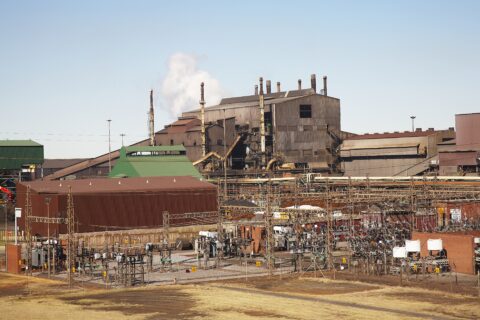SA Mining
The Importance Of The MPRD Act In Mining
The South African mining industry was, for a long time, the bedrock of the economy, and to date, it continues to remain a major contributor. This is why the Minerals and Petroleum Resources Development Act (MPRDA) is so crucial – it lies at the heart of mineral regulation in South Africa.
The aim of the MPRDA is to try and balance mineral development, socio-economic development and the protection of the environment. The MPRDA therefore abolished the private ownership of minerals, instead providing that “mineral resources are the common heritage of all the people of South Africa and the state is the custodian thereof”.
According to Ntsiki Adonisi, head of ENS’s natural resources and environment practice, the MPRDA came into force on 1 May 2004, replacing the Minerals Act of 1991, in terms of which it was possible for private individuals to hold mineral rights or title to minerals. She adds that making the state the custodian of the mineral resources of the country has paved the way for the state to redress the imbalances of the past.
“The MPRDA is important because it prescribes how mining titles are allocated and provides for titles to be allocated on a first-come-first-serve basis; it also enables mining companies to conclude various mining transactions. Furthermore, it has played a pivotal role in driving transformation in the country and enabling the formation, emergence and growth of black-owned mining companies in SA,” she says.
“Of course, the MPRDA is not without its shortcomings. Over the years, we have witnessed growing regulatory uncertainty, and mine communities growing increasingly unhappy with benefits – or the lack thereof – delivered by mining companies, as prescribed in social and labour plans.”
What is covered and what is not
The MPRDA, continues Adonisi, makes provision for mining companies to conclude mining transactions. In terms of section 11, prospecting and mining right holders may, inter alia, sell, cede or dispose of their titles to third parties, provided that the minister has first consented to that sale.
“The MPRDA also deals with mine closure. A holder of a mining title is required to have an environmental management plan or environmental management programme, as the case may be. A holder is also required to make financial provisions for the rehabilitation or management of negative environmental impacts caused by mining operations.
“The MPRDA also recognises the need to promote local and rural development, and the social rise of communities affected by mining. An applicant for a mining right is therefore required to compile a social and labour plan to, among others, ensure that holders of mining rights contribute towards the socio-economic development of the areas in which they are operating.”
In relation to mining titles, she notes that the MPRDA contains deadlines pertaining to the requirements that applicants must satisfy in order for the application to be assessed. In relation to prospecting rights, this is provided for. However, the MPRDA is silent on when the Department of Mineral Resources and Energy (DMRE) must have granted a mining right.
“Consequently, as has been the experience in practice, it may take months or even years for the DMRE to grant or refuse applications for mining rights (and all other mining titles). This has been exacerbated by the SA Mineral Resources Administration Database, which, ironically, was supposed to improve turnaround times for applications for prospecting and mining licences,” she states.
“Old-order mine dumps, which were mine dumps created in terms of the pre-MPRDA regime, are currently not regulated by the MPRDA. Consequently, common law owners of such dumps are free to process them, without the need to obtain a mining title under the MPRDA.”
Adonisi explains that the MPRDA failed to consider historic dumps, which was confirmed in the De Beers Consolidated Mines Ltd v Ataqua Mining (Pty) Ltd and Others (3215/06) [2007] ZAFSHC 74. In this case, the court held that minerals contained in historic dumps did not occur naturally in or on the earth, nor did they constitute residue stockpiles. Therefore, they did not fall within the definition of “minerals” in the MPRDA.
In 2008, the DMRE unsuccessfully attempted to include historic dumps in the MPRDA, by amending the definitions of “residue stockpiles” and “residue deposits” to include historic dumps.
Evolution over 20 years
“The last 20 years have produced unprecedented success stories. The success stories are, however, doused by some of the shortcomings and controversies arising from the interpretation of the MPRDA,” she adds.
“Over the past two decades, the MPRDA has been subject to several controversies and legal challenges, particularly in terms of the evolving rules regarding black economic empowerment, and the wide discretion given to the government in administering the sector.”
Regardless of these controversies, she indicates that by far the biggest challenge to the MPRDA and its various amendments is the lack of enforcement. The DMRE has taken various steps to address the uncertainty, but it remains to be seen whether these steps will yield positive results for the industry.
Furthermore, despite South Africa having a mature mining industry, the cadastral system is yet to be implemented. Nonetheless, the DMRE confirmed earlier this year that it is on track to implement a functioning mining cadastral system in the near future.
The role of law firms
“At ENS, our expertise covers the circle of mining – from exploration, to mining and beneficiation, to downscaling and closure. We advise clients from startup exploration projects to well-established mining projects,” she says.
“We advise clients on mining aspects of equity and asset acquisitions, disposals and corporate restructuring, and black economic empowerment transactions, as well as on distressed mining assets and royalties in the mining sector. We also advise clients on the integrity, security of tenure and variation of mining titles.”
ENS also assists clients in the execution and registration of mining titles, continues Adonisi, as well as mining disputes, including administrative appeals and judicial reviews. The firm further assists in the structuring, drafting, negotiating and reviewing of various types of agreements, in compliance with the MPRDA, including the appropriate conditions precedents, warranties and indemnities.
“The MPRDA is an intricate piece of legislation which suffers from various interpretational challenges, not to mention that mining law as a whole is complex – as previous mining law statutes are still relevant, and regard has to be had for them in certain instances.
“Experienced lawyers can navigate the intricacies of this highly complex area of law and ensure compliance. This is all the more important today, given the prominence of environmental, social and governance (ESG) principles to this sector.”
It should be understood that the MPRDA has far-reaching consequences for the mining industry. Firstly, the MPRDA gives the right to conduct mining or prospecting operations. Once the right has been obtained, the need for compliance remains, and non-compliance with the provisions of the MPRDA may result in penalties.
“After 20 years, the DMRE is now in the process of amending the MPRDA, and is currently consulting with key stakeholders. ENS looks forward to reviewing the Bill once it has been gazetted for public comment, and hopes that it will deal with the current uncertainties in the MPRDA, in order to facilitate the ease of doing business in South Africa,” concludes Adonisi.







 Sign-up and receive the Business Media MAGS newsletter OR SA Mining newsletter straight to your inbox.
Sign-up and receive the Business Media MAGS newsletter OR SA Mining newsletter straight to your inbox.